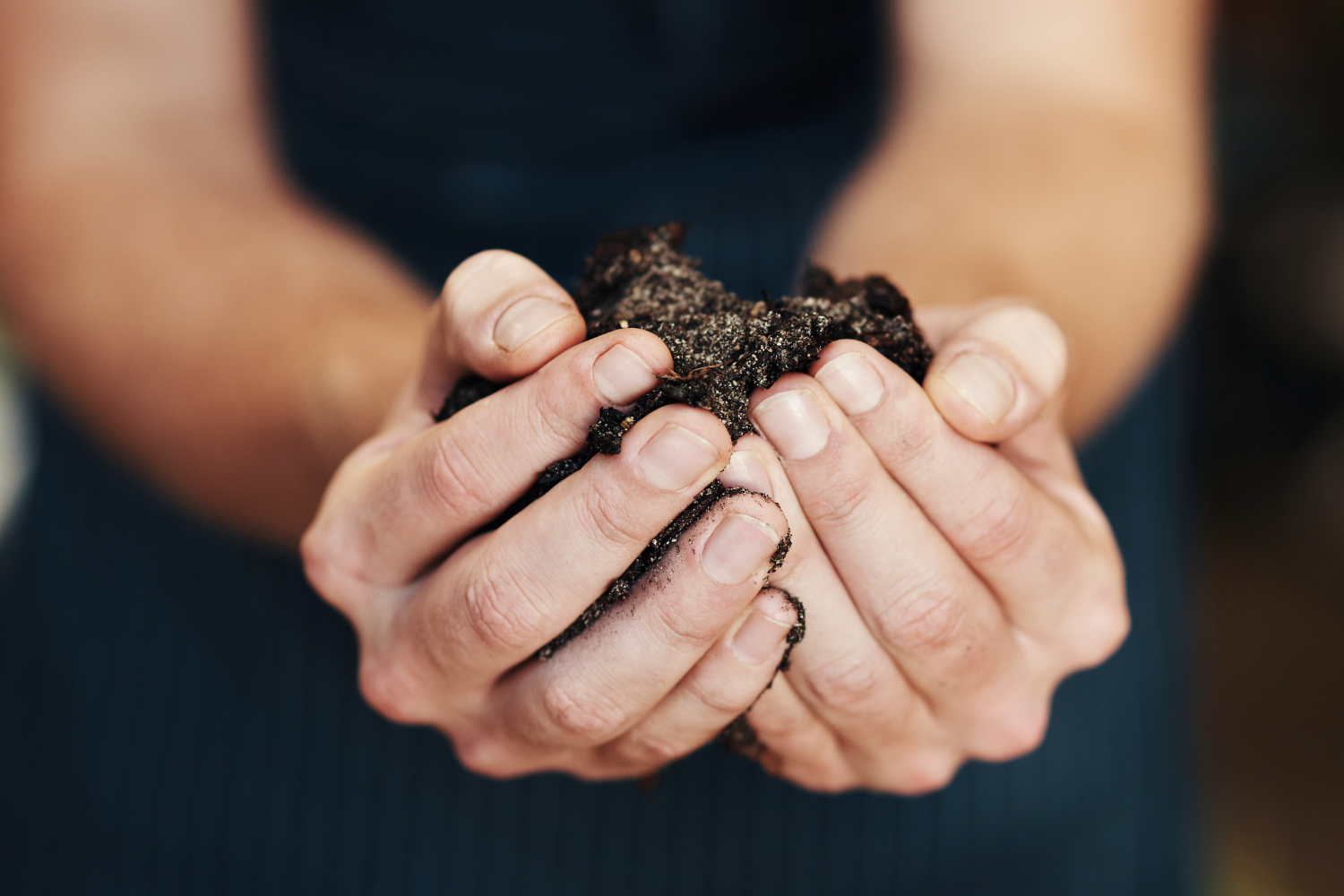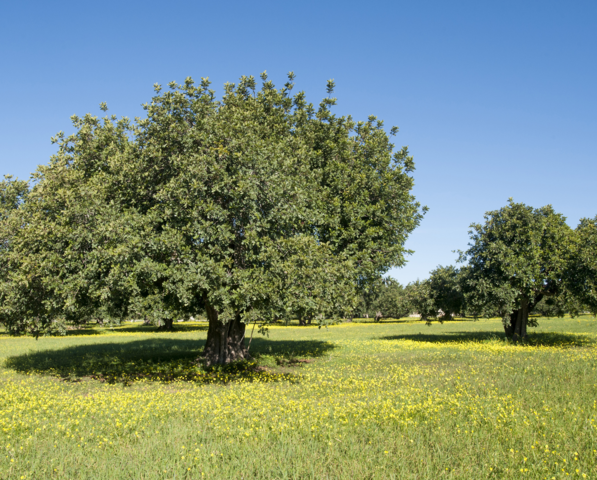Celebrate Earth Day 2020 by joining Teeccino in supporting tree planting with Kiss the Ground & The Jungle Project
For Earth Day 2020, we’d like to share with you an exciting tree planting project that Teeccino supports. We’ve joined forces with Kiss the Ground, a non-profit foundation working to educate and support farmers in improving their soil through regenerative agriculture and to train leaders to promote policies that change how farmland is managed.
Planting trees in the tropics has been part of Teeccino’s mission since I founded the Company in 1994 while working in the rainforest in Central America. That’s why I’m pleased to team up with The Jungle Project in collaboration with Kiss the Ground, which oversees the planting of the breadfruit tree in Central America. Breadfruit is a starchy fruit like a potato that can be ground into a gluten-free flour that’s rich in protein and complex carbohydrates. One tree can feed a family of four for 70 years!
By supporting regenerative agriculture, each of us can help reverse this global warming trend in our lifetime while improving the health of the plants we eat and thus our own health as well. For Earth Day 2020, Teeccino is matching any funds donated by our customers during check out on our website.

What is regenerative agriculture?
If you tune in to conversations about state-of-the-art organic agriculture these days, you’re sure to hear the use of the term, “regenerative.”
Every mission-driven natural foods company is scrambling to make sure its organic ingredients are grown with regenerative agricultural practices in place. At Teeccino, we’re taking this movement just as seriously as we take the organic certification of our herbal ingredients. Here’s why:
Rich, fertile topsoil with deep humus has the ability to store millions of tons of carbon right under our feet. Plants pull carbon out of the atmosphere via photosynthesis and sink it into the ground. Humus, the organic matter in healthy soil, acts like a sponge, absorbing both water and carbon while supporting the life of plants and the trillions of microorganisms that live in the soil.
It’s called the carbon cycle. If we humans rebuild and regenerate our topsoil, it can save life as we know it from the disastrous warming trend that is accelerating extinction of so many species, from mammals to insects. And it can be done relatively quickly. Farmers using regenerative practices to build topsoil are finding they can build multiple inches of topsoil in a season.
Here’s an interesting fact that surprised me: Agriculture since the mid-1800’s has been responsible for releasing twice as much carbon into the atmosphere as burning fossil fuels! Boggles the mind, doesn’t it? Since the 1970’s, modern agricultural practices have lost carbon at a greatly accelerated rate. At the same time, farmers are losing topsoil at alarming volumes. No topsoil, no plants to eat!

Regenerative agriculture and Teeccino’s herbal ingredients
The majority of Teeccino’s ingredients come from tree crops: carob, ramón, almond, date and fig trees.
This is fortuitous because trees are permanent plants that continuously draw down carbon from the atmosphere year after year without disturbing the soil. When soil is tilled, a tremendous amount of carbon gets released into the atmosphere.
One of our main ingredients, carob, is a leguminous tree that farmers plant in their organic fields to help nourish the crops they grow. Wild carob trees that grow in the mountains surrounding the Mediterranean are also a significant source of organic carob pods. In the wild, trees like carob and the Ramón tree in Guatemala are part of a permanent forest cover that regenerates the soil as part of nature’s carbon cycle. Growing to over 130 ft tall, the Ramón tree is an essential part of the upper canopy throughout forests in Central America.
In orchards, many farmers leave the soil bare between trees so that weeds don’t compete with the trees for nutrients. Cover crops such as legumes are a foundation of both organic and regenerative agricultural because they improve soil health by sinking nitrogen into the soil, an essential nutrient for the trees. When the plants are tilled into the soil, they become “green manure” that builds the humus content, enabling the soil to act like a sponge and absorb much more water during heavy rainfall.
Two of our main ingredients are organic crops planted annually: barley and chicory roots. We’re lucky that barley is used as a cover crop as it has thick roots, crowds out weeds, and recycles more nitrogen back into the soil when its remains are turned into the fields after harvest. Barley can be a “no-till” crop.
Our organic chicory, grown in India by smallholder family farmers, is weeded by hand rather than sprayed with herbicides that are used in conventional agriculture. We work with a team of organic agricultural specialists in India to advise and teach best organic practices to the farmers in order to increase their yields and enhance the health of their soil.
HERE'S WHAT YOU CAN DO:
- Support The Jungle Project and Kiss the Ground by donating when shopping on Teeccino’s website during our Earth Day Sale between April 22-24, 2020. Use the coupon code “Earth2020” to get 25% off. Donate when checking out - Teeccino will match all donations dollar for dollar up to $5,000!
- Buy food from organic farmers who care for their soil. How do you know if they do? If you frequent your local Farmer’s Market, you’ll find organic family farmers who build their topsoil as part of their farm’s regime. Organic agriculture is designed to grow healthy plants by building healthy soil. However, big business has entered the organic market too. Although we welcome more farmland being converted to organic practices, it’s the small family farms that are at the vanguard of the regenerative agricultural movement.
- Read about regenerative agriculture and spread the word. I highly recommend this informative and interesting book, Cows Save The Planet by the investigative journalist, Judith Schwartz. The book should have been entitled "Soil Can Save The Planet," but I guess the publishers thought cows were more appealing. You’ll be amazed reading her tales of scientists, ranchers and farmers all over the planet who are working to regenerate our soil. Don’t have time to read the book? Here’s an article by Judith in a Yale University publication that sums up the latest soil science.
- Do you have some land? Practicing regenerative agriculture even on a small plot can help save the planet. Grow trees that give food. Sacrifice your lawn for herbs, flowers, and any perennial plants with deep roots. Grow legumes. Keep your soil covered with mulch. As one organic farmer advised me twenty years ago regarding my heavy clay soil with thin topsoil: “Just keep covering the ground with more and more mulch every year. Eventually you’ll have good topsoil.” I took his advice and I can say now that my land has many inches of topsoil!
Some more interesting & disturbing facts:
- There are 2500 billion tons of carbon stored in the planet’s soil whereas plants and animals only store 560 billion tons. That’s why there is more carbon in the soil than there is in forests!
- Carbon rich soil stores water like a sponge and then releases it down into ground water storage, thereby protecting land from floods and replenishing our clean water supply. Too much fresh water now runs off of our asphalt-covered cities and conventional farmland, taking with it toxins and topsoil and polluting our rivers and oceans.
- World Wildlife Fund estimates that we are losing 30-37 million acres of forest every year. Think 36 football fields every minute! Loss of forest cover is creating drought as forest respiration produces vapor that later becomes rain.
- Desertification is growing rapidly as rain cycles are disturbed through loss of forests and as land is increasingly covered by asphalt or left bare. A single tree can transmit 26 gallons of water on a sunny day which adds to the cooling of the atmosphere and contributes to the rain cycle.



1 comment
My daughter & I live out in the country on an old homestead in the mountains of Virginia. We recycle, repurpose, regenerate, compost, etc. We raise egg laying hens, have 3 goats & grow organic gardens & raised beds full of vegetables, fruit trees & herbs. My daughter owns/operates The Red Cottage Apothecary & I live next to her helping to raise my 3 grandbabies & help where needed in the business & on the homestead. We love good coffee & I’ve switched to almost 100% Teeccino. Wondering if there is any benefit to adding the grounds into the soil of our plants, including houseplants, flowers, and all the edibles, as opposed to just tossing them into the compost pile or garbage can. Just couldn’t find that info online so thought I would reach out & just ask. Thanks so much